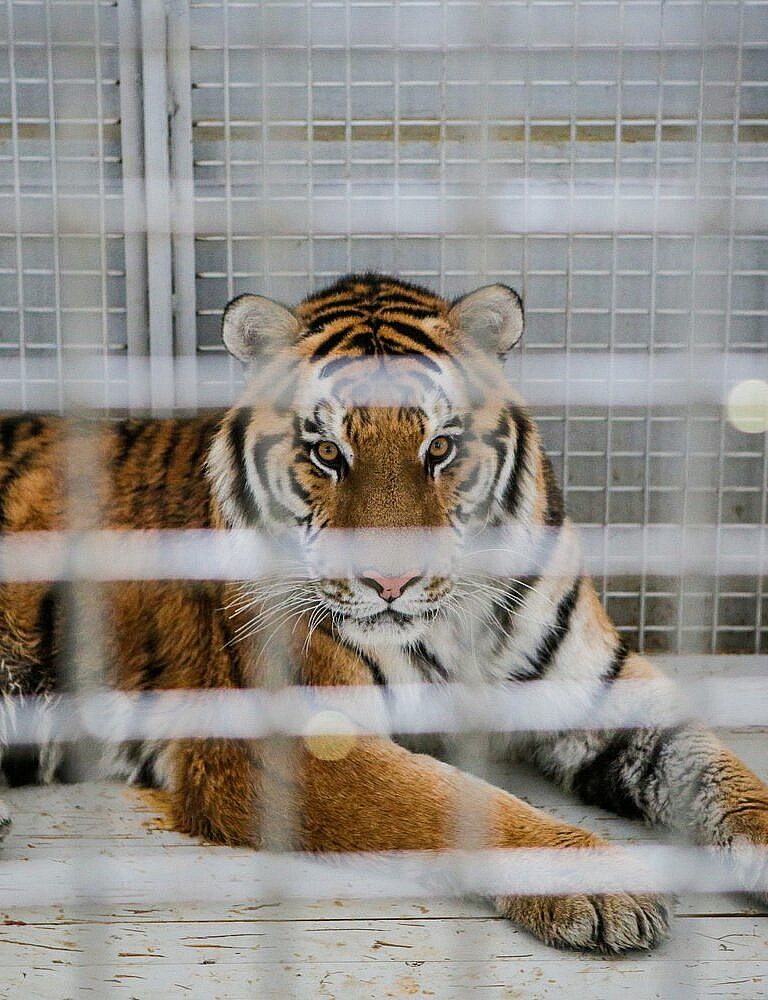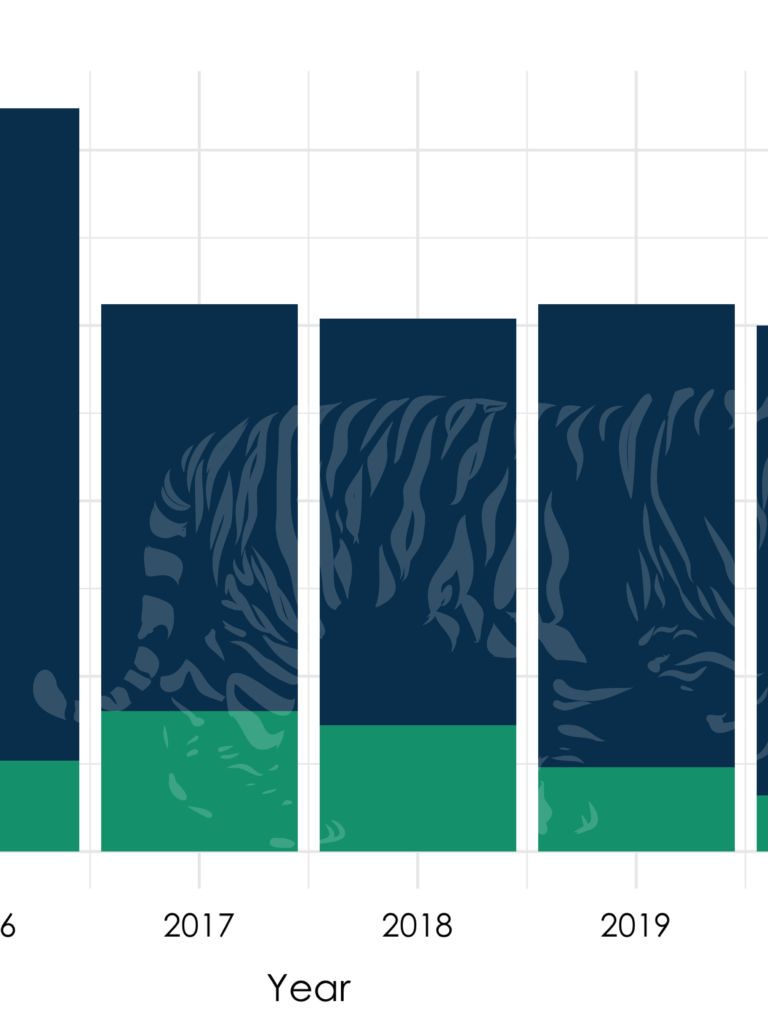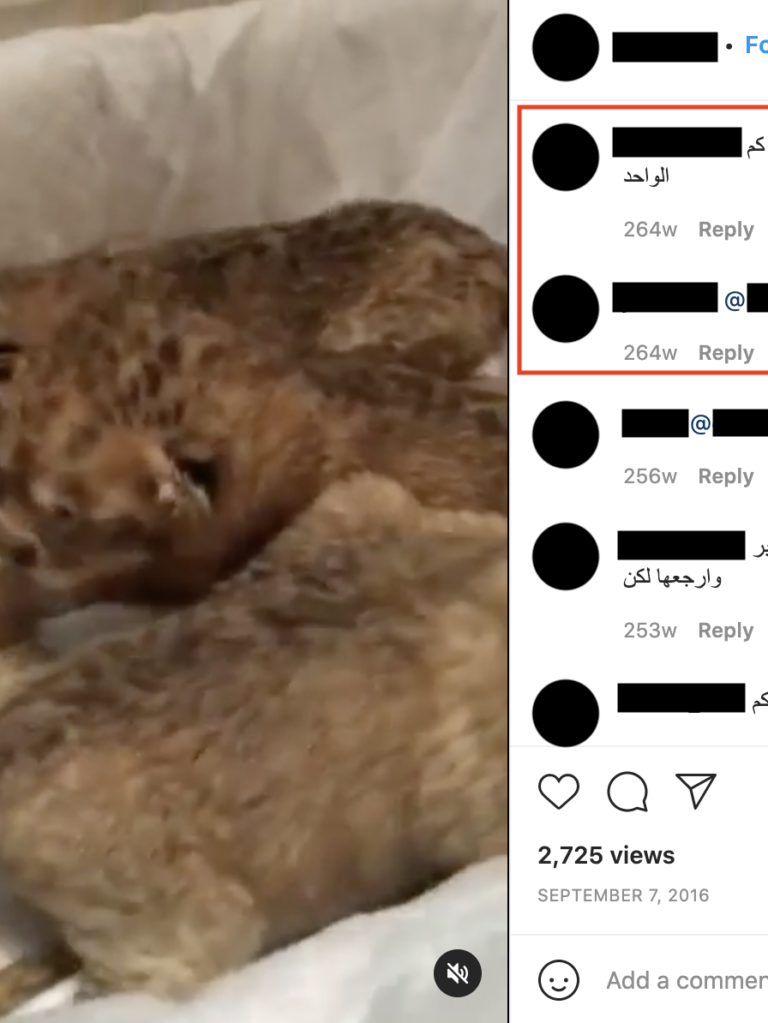Suspicious or Illicit

In spite of a rigorous legal system governing the international wildlife trade, big cats are still being poached, smuggled, and illicitly sold every year, either into the live pet trade or for their parts. The analysis of convergent sources of PAI offers an innovative and vital approach for examining an otherwise opaque and, as “Tiger King” demonstrated, contentious system.
In spite of a rigorous legal system governing the international wildlife trade, big cats are still being poached, smuggled, and illicitly sold every year, either into the live pet trade or for their parts. C4ADS actively strives to transform unstructured data into actionable results in order to address the threats posed by big cat trafficking. In doing so, C4ADS analysts leverage diverse sources of publicly available information (PAI), collaborate with an extensive network of partners, and maintain wildlife seizure records in the C4ADS Wildlife Seizure Database.
The C4ADS Wildlife Seizure Database includes records of over 1,000 publicly reported tiger and leopard seizures in the past decade. Approximately 89% of these were seizures of the body parts of big cats (e.g. skins, bones, teeth, etc.), while the remaining seizures consisted of live animals. The number of live tigers seized since 2011, in particular, is staggering – 235 live tigers intercepted across 111 seizures.

Ironically, despite its focus on chronicling interpersonal feuds and the operations of Joe Exotic’s Greater Wynnewood Exotic Animal Park, the release of “Tiger King: Murder, Mayhem, and Madness” by Netflix in March 2020 exposed audiences to a critical underlying issue: the often-ambiguous nature of big cat ownership. It is this ambiguity that makes the tracking and prevention of illicit big cat trafficking so challenging.
As many viewers of the “Tiger King” series could likely attest, big cat ownership is often controversial and can be suspicious. However, distinguishing morally suspect ventures from outright illicit activities, specifically illicit wildlife trafficking, is complicated. To tackle this problem, C4ADS has harnessed PAI to shed light on questionable big cat ownership and even detect illicit activity.
The Legal Context #
The Convention on International Trade in Endangered Species (CITES), the foremost intergovernmental treaty regulating the international wildlife trade, places restrictions on the transnational purchase and sale of big cats, in order to safeguard the species in their natural habitats. Significantly, however, while some countries use CITES’ articles as guidelines, the laws governing domestic trade in wildlife can vary by jurisdiction.
By the Numbers #
Seizures of both live tigers and tiger parts have occurred at a fairly steady rate over the past six years, averaging 80 seizures per year. Moreover, the overall number of publicly reported tiger seizures was largely unaffected by the COVID-19 pandemic in 2020, a trend in contrast to the decline in seizures of other commonly trafficked wildlife specimens, such as ivory (49% decrease between 2019 and 2020) and rhino horn (25% decrease between 2019 and 2020).

At this time, the cause of this “pandemic resilience” in publicly reported tiger seizures remains unknown. Several potential influences on tiger seizures are worth noting, however, such as tiger trafficking being less reliant on intercontinental transportation sectors – notably air and maritime – whose operations were greatly impacted by pandemic restrictions. For instance, between 2011 and 2020, 96% of seized tiger shipments had been transported over land, while only 3% were conveyed via air. This is in stark contrast to the methods of transportation of seized ivory, 23% of which had been moved via air, and pangolin, 15% of which were transported via air, during the given time period.
It is also possible that part of the “pandemic resilience” observed in tiger seizure data is, in fact, not trade resilience at all, but is rather due to an increase in public interest in the illicit possession of big cats. Heightened public attention to big cat ownership resulting from popular media, such as the premier of “Tiger King” which coincided with the beginning of the pandemic, could have led to either an increase in international media reporting of tiger seizures, a surge in law enforcement activity focused on illicit big cat ownership, or both. While the full ramifications of the COVID-19 pandemic and numerous other factors on big cat seizures remain to be seen, the C4ADS Wildlife Seizure Database demonstrates that the scope of the illicit wildlife trade involving these species is both global and persistent.
The Challenge of Ambiguity: A Case Study in Big Cat “Trafficking” #
On the surface, identifying suspicious or problematic instances of big cat ownership may seem straightforward. For example, an Instagram post advertising the sale of a young cheetah, including a selling price of “25 thousand,” appears to demonstrate an intent to sell a controlled species. However, it can be easy to misinterpret the suggested appearance of illicit activity as concrete evidence thereof.

In this case, there are several reasons that this Instagram post alone does not constitute adequate evidence of illicit activity. First, at the most fundamental level, the account user’s possession of the cheetah can be called into question. Second, working under the presumption that the cheetah was indeed in the possession of the account user, it is unknown whether they acquired the animal in accordance with international regulations. Given that CITES allows an annual export quota of 205 cheetahs across three southern African countries, the individual in possession of this cheetah could have theoretically obtained the animal without being in violation of international law. The Instagram post alone does not provide sufficient information to substantiate or refute this possibility.
Third, although a selling price is listed in the post’s caption, it is unclear if a transaction actually occurred. Even if the alleged seller were to post a follow-up comment suggesting that a sale had occurred, as seen in Figure 4, it is still unknown to whom the young big cats were sold, whether they were traded across international borders, and whether they were accompanied by proper paperwork as a controlled species under CITES.

Even other documentation that seems to be “conclusive” evidence of illicit activity — such as the advertisement shown below on a business-to-business commerce website offering a variety of young big cats for sale, with origin and stock locations in different countries — may not be considered definitive proof. It remains possible that the advertised animals may have been sourced from legitimately registered breeding facilities, and were therefore potentially compliant under CITES. These nuances highlight the difficulty in determining whether these big cats are being owned and sold illicitly.

Addressing Ambiguity With PAI #
Analyzing convergent sources of PAI provides a mechanism for C4ADS analysts to not only mitigate the ambiguity surrounding big cat ownership, but also to provide the data and analysis necessary to support partners in combatting illicit big cat trafficking. Through the cross-examination of different data sources, including social media, corporate records, trade data, geospatial imagery, and even flight data, PAI can empower C4ADS analysts to uncover “red flag” characteristics of big cat owners, such as:
- Links between people of interest (e.g. known traffickers, private zoo owners, social media influencers in possession of big cats, etc.) within the same business or social groups
- Participation in industries that are considered to be “high-risk” for wildlife trafficking fronts (i.e. import-export businesses, general shipping companies, private zoos, timber companies, etc.)
- Suspicious geographic patterns, including frequent travel between common wildlife source, transit, and destination countries
While none of these data sources alone may constitute proof of illicit activity, the combined results can paint a more comprehensive picture of the validity (or invalidity) of big cat ownership. As a result, the analysis of convergent sources of PAI offers an innovative and vital approach for examining an otherwise opaque and, as “Tiger King” demonstrated, contentious system.





